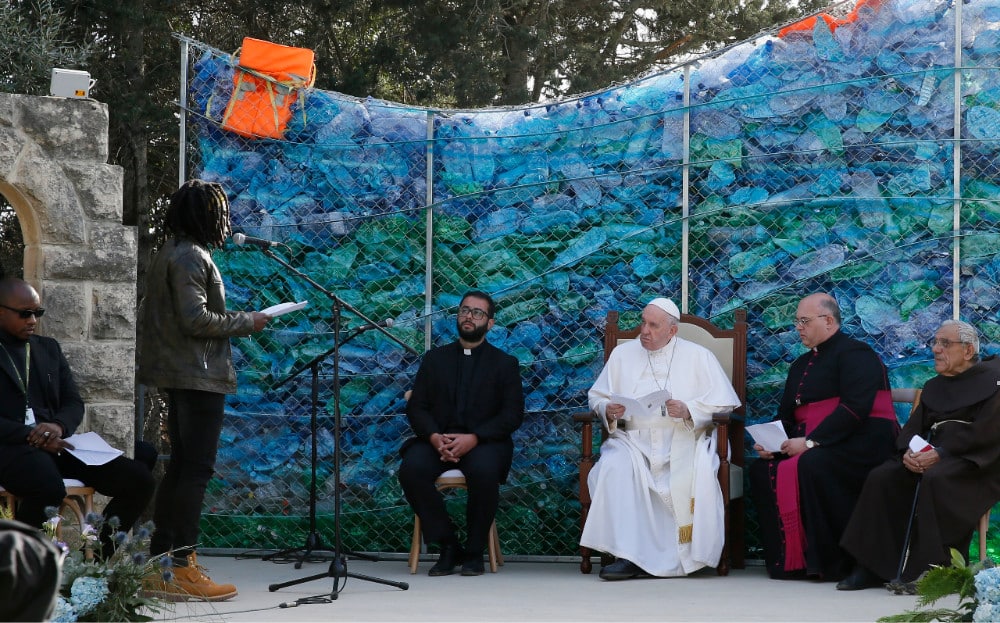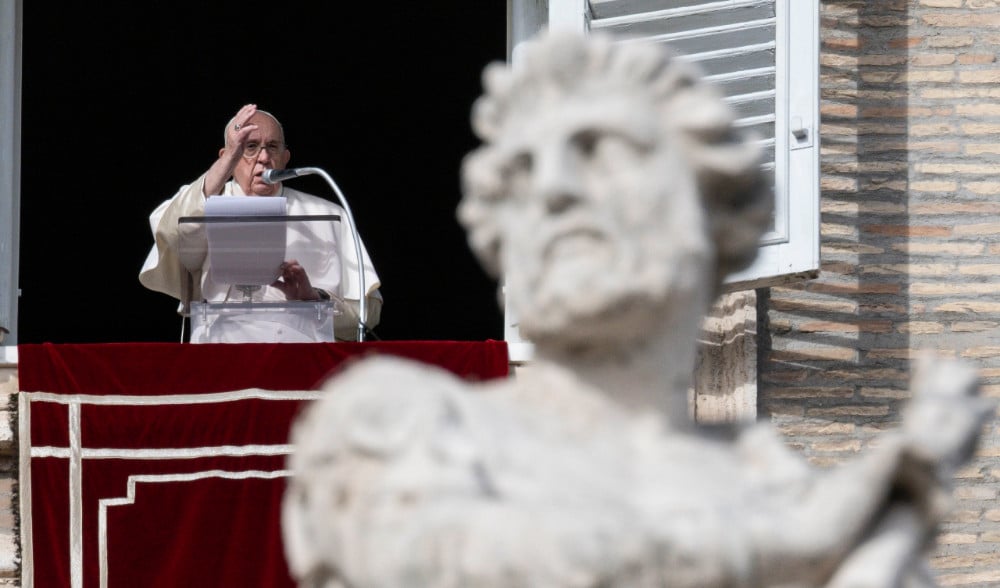VATICAN CITY (CNS) — While 2022 finally saw the publication of Pope Francis’ constitution reforming the Roman Curia, the biggest news and the biggest changes in his ministry came from Russia’s war on Ukraine and from the pope’s own problems walking.
Knee problems forced the pope, who will celebrate his 86th birthday Dec. 17, to postpone a planned trip to Congo and South Sudan in July, although he did make a major trip to Canada later that same month.
A few weeks before heading to North America, he had told the Reuters news agency that an inflamed ligament in his right knee caused him to limp, which made him walk badly and that, in turn, caused a small fracture.
The pope was complaining of knee pain in January and canceling public events already in February; by early May he was arriving at audiences in a wheelchair.
As the year ended, he mostly used a cane to walk in public, but the wheelchair was a frequent alternative. And, at papal liturgies, it became the norm for him preside over the Liturgy of the Word and give the homily, but have a cardinal or bishop preside over the Liturgy of the Eucharist.
As the pope’s step faltered, his cries for peace increased, although not without controversy and criticism.
Soon after Russia invaded Ukraine in late February, Pope Francis took the unusual step of leaving the Vatican to go to the Russian Embassy to the Holy See to plead for peace and offer the Vatican’s services as a mediator. And, inviting bishops around the globe to join him, he solemnly entrusted and consecrated the church, all humanity and “especially Russia and Ukraine” to the Immaculate Heart of Mary during a prayer service March 25 in St. Peter’s Basilica.
But even as millions of Ukrainians — mostly women and children — fled and as evidence mounted of Russian war crimes, Pope Francis did not publicly condemn Russian President Vladimir Putin. That, along with his pleas for Russia and Ukraine to dialogue and negotiate peace, left many people, particularly Ukrainians, hurt that the pope seemed to somehow blame “both sides” for the war.
Journalists repeatedly asked Pope Francis to explain.
In late November, he told the Jesuit-run America magazine he did not think it was necessary to name names. “If you have a martyred people, you have someone who martyrs them.”
“Why do I not name Putin? Because it is not necessary; it is already known,” he said.
And, he said, “the position of the Holy See is to seek peace and to seek an understanding. The diplomacy of the Holy See is moving in this direction and, of course, is always willing to mediate.”
It was not until October that Pope Francis publicly said he was calling on “the president of the Russian Federation, begging him to stop this spiral of violence and death, also for the sake of his people.”
At the same time, Pope Francis appealed to Ukrainian President Volodymyr Zelenskyy “to be open” to any “serious peace proposals.”
Also in the area of diplomacy, in October the Vatican renewed for another two years its agreement with China on naming bishops that are acceptable to both the communist government and the pope. But soon after, the Chinese government transferred a bishop without Vatican approval, drawing an unusual statement of “regret” from the Vatican that the assignment “did not take place in accordance with the spirit of dialogue existing between the Vatican and Chinese sides.”
In August, the pope created 20 new cardinals and led the entire College of Cardinals in a two-day meeting on the apostolic constitution “Praedicate Evangelium” (Preach the Gospel), which was the first major reform and reorganization of the Roman Curia since 1988.
Published in March and taking effect in June, the document merged some Vatican congregations and pontifical councils and raised the status of others — particularly the charitable office of the papal almoner. But mostly, it insisted the Roman Curia was a service organization meant to support the pope and local bishops in their efforts to promote the church as a community of missionary disciples, sharing the Gospel and caring for all those in need.
The project had been a long one. Six months after taking office in 2013, Pope Francis set up his international Council of Cardinals to advise him and to help design the reform. They interviewed all the heads of Vatican offices, studied what each was doing and made dozens of proposals, going through various drafts and consultation periods before the final version was promulgated.
Also long in the making was Pope Francis’ trip to Canada to apologize to Indigenous communities for the ways Catholics and their institutions, especially residential schools, contributed to their suffering and to the stifling of their language, culture and traditional spirituality.
The Canadian Truth and Reconciliation Commission’s Call to Action in 2015 included a request that the pope make such an apology on the land of the First Nations, Inuit and Métis communities. And representatives of the three groups came to the Vatican in March and April to share with the pope the stories of the survivors of residential schools and to recount the multigenerational trauma that came from the physical and emotional abuse, the splitting apart of families and the suppression of their people’s language and cultures.
Meeting Indigenous people in Edmonton, Maskwacis and Lac Ste. Anne in Alberta, in Quebec City and nearby Sainte-Anne-de-Beaupré and, finally, in Iqaluit, Nunavut, in the Canadian Arctic, Pope Francis repeatedly said, “I’m sorry.”
“The overall effects of the policies linked to the residential schools were catastrophic,” he said at Maskwacis. “What our Christian faith tells us is that this was a disastrous error, incompatible with the Gospel of Jesus Christ.”
Pope Francis made three other foreign trips in 2022: focusing on migrants in Malta and on interreligious dialogue and promoting human fraternity in visits to Kazakhstan and Bahrain.
Throughout the year, the pope continued to talk about the need for the Catholic Church to embrace “synodality,” a style of sharing the Gospel by listening to one another and to the Holy Spirit and making room for each of the baptized to accept his or her responsibilities as a disciple and welcoming the gifts of all.
Saying he did not want to rush the process of discerning how the Holy Spirit is calling the church to grow in “synodality,” Pope Francis announced in October that the next assembly of the Synod of Bishops would take place in two sessions: October 2023 and October 2024.







